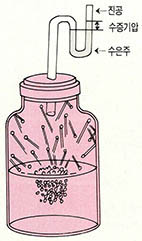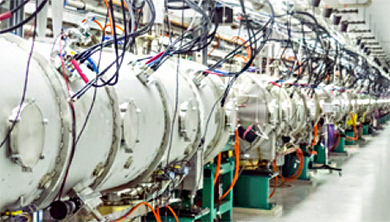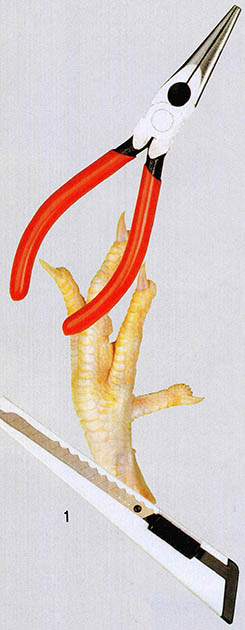우주에서 가장 오래된 물체는 분명이 우주 자체다. 우주의 나이가 가장 많지만 얼마나 나이가 되는지는 여전히 의문으로 남아있다. 올해에도 우주의 나이에 대한 새로운 추정, 아니 전혀 다른 새로운 추정이 나왔다.
우주의 나이가 얼마나 됐을까하고 사람들이 생각하기 시작한것은 60년이 채 되지 않는다. 지구의 나이가 45억년이 되었다 할지라도 (학자들은 요즘 이 나이가 확실하다고 느끼고 있다) 우주는 형상을 갖추기 이전 영겁의 세월동안 존재했을 것 같다.
드디어 1920년대에 '에드윈 허블'은 지구로부터 여러 은하들까지의 거리와 은하들이 지구로부터 멀어지는 속도를 측정했다.(실제로 모든 은하가 멀어져가고 있다).
은하가 멀리 떨어져 갈수록 더욱 빠른 속도로, 거리의 비율에 따라 빨리 멀어져 간다는 것은 명백한것같다.
이런 모양의 전반적 후퇴는 우주가 전체적으로 확장되고 있다는 설에 의해 쉽게 설명되었다.
만약 시간이 거꾸로 흔다고 상상한다면(필름을 거꾸로 돌리는것 처럼)모든 은하들이 어느 한점까지 서로 접근하여 부딪쳐 거대한 한개의 물질 덩어리가 될것이다.
이러한 이유로 1927년 벨지움의 천문학자 '조르즈르메트로'가 우주는 하나의 단단한 물질이 폭발해서 생겨난 것이라는 의견을 제시했다. 은하들은 요즘 '빅뱅'이라고 대중적으로 불리우는 최초의 폭발에 힘입어 아직도 계속 멀어져 가고 있는것이다.
1929년에 '허블'은 빅뱅이 20억년전에 일어났을것이라고 시사했다. 이 견해는 지질학자들이 지구가 그보다 상당히 오래된것으로 확신하고 있던터라(아시다시피 지구의 나이는 이보다 배나 된다)대단한 소란을 빚었다. 허블의 추정은 지구가 전체우주보다 오래되었다는것을 뜻하는 것이된다.
천문학자들은 은하들에 대해서는 논쟁할것이 없다고 느꼈다. 그래서 1942년까지 진전이 없었다. 이때 독일계 미국인 천문학자 '월터 바드'가 전지(戰時)의 등화관제를 이용해 '안드로메다'은하 (가장 가까운 큰은하)를 자세히 연구했다. 그리하여 학자들이 은하들의 거리르 측정해온 방법중의 하나에 예상못한 착오가 있었음이 들어났다. 이런 잘못된것을 고려함으로써 은하들사이의 거리는 종래 생각되어온것보다 3배나 멀다는것이 밝혀졌다. 그것은, 만약 시각이 거꾸로 갈때, 은하들이 서로 합쳐지는데 적어도 3배나 오래 걸릴것이라는것을 뜻했다.그럼으로 빅뱅도 과거에 계산되었던것보다 적어도 3배나 오랜 세월전에 일어났을것이다.
최소한 우주의 나이가 60억년은 되리라는 것에 지질학자들은 만족했다.
그러나 그정도에서 문제가 끝나지는 않았다. 천문학자들은 은하들이 멀어져가는 속도를 보다 정교하게 계산했고 개개의 별의 나이가 얼마나 됐을까를 알려주는 치밀한 관측을 계속해왔다. 이제 그결과는 천문학자들이 우주는 1백억년에서 2백억년사이에 생겨났을 것이라는데 만족하고 있는 상태로 되어있다. 가장 자주 인용되는 수자는 (나역시그렇다) 두수자의 중간인 1백50억년전이다.
대부분의 천문학자들은 진정한 나이는 1백50억년미만이라기 보다는 그이상이라고 느끼고 있다.
네덜란드 '그로닝겐'대학의 천문학자'하비버쳐'는 다른시각에서 이문제를 연구했다. 어떤 특정한 별의 빛을 분석하면 그별의 화학성분이 어떤지 알수있다. 성분중에는 방사능을 띤것이 있다. 이러한 별들의 나이는 방사능에 의해 산출되는 성분의 양에의해 측정될 수 있다. 일부의 별들은 우주처럼 오래된 것으로 보이는데 이런 별들은 빅뱅직후에 탄생된것이 틀림없다.
'버쳐'는 이들 늙은 별들에 있는 '토륨'과 '네오디뮴'이라는 원소를 연구했다.
별들 내부의 자체조건하에서 토륨은 어떤 일정한 비율에 따라 반드시 분해된다.
현존하는 토륨과 네오디뮴양으로부터 '버쳐'는 분해과정이 1백억년정도 지속되었음을 계산해 내었다. 그것은 별들이 1백억년이상 오래되지 않았음을 의미할것이다. 그는 1987년 7월에 이 수치를 공표했다.
그 별들은 우리가 볼 수 있는 것들중 가장 오래된것들이므로 우주는 1백 10억년 또는 1백 20억년이상 되지는 않았을 것 같다.
그러나 '버쳐'의 계산은 매우 복잡 미묘한 것이며 또 그가 연구한 별들이 사실상 가장 오래된 것이 아닐수도 있다. 따라서 천문학자들은 이러한 새로운 측정법에 조심스런 반응을 보였다. 우주의 나이는 10억년 단위까지는 접근했지만 아직도 연구할 여지가 남아있다.
The oldest object in the universe, is, obviously, the universe itself. The universe has the oldest birthday, but how old that birthday is still a matter of question, and this year there has been a new estimate or, rather, another new estimate.
It was not until 60 years ago that anyone had any idea at all how old the universe might be. Even if the Earth itself is 4.5 billion years old (a figure of which scientists now feel quite certain), the universe might have existed for uncounted eons before its formation.
But then, in the 1920s, Edwin P. Hubble estimated the distances of various galaxies from and the speed at which they were receding from us. (They were very nearly all receding.) It seemed quite clear that the father away the galaxy, the faster it was receding ― and at a rate proportional to its distance. This universal recession in just this fashion was most easily explained by the theory that the universe, as a whole, is expanding. If one imagined time reversing itself, then(as in a backward-running film)all the galaxies would seem to be approaching each other until, at some point, they would smash together into one vast conglomeration of matter.
It was for this reason that, in 1927, a Belgian astronomer, Georges Lemaitre, suggested that the universe began as a tight conglomeration of matter that exploded. The galaxies are now still receding from each other as a result of that initial explosion, which is now popularly called "the big bang".
In 1929, Hubble suggested that the big bang took place tow billion years ago. This created quite a stir because geologists were quite certain that the Earth was considerably older than that (more than twice as old, we now know).Hubble's estimate would mean the Earth is older than the entire universe.
Astronomers felt there was no arguing with the galaxies, so there was an impasse until 1942. At that time, the GermanAmerican astronomer Walter Baade took advantage of the wartime blackout to study the Andromeda galaxy (the nearest large galaxy) in detail. It turned out that one of the devices used by astronomers to judge distances of the galaxies had certain unexpected complications. Taking those complications into account, all the galaxies turned out too be up to three times as far from each other as had been thought. That meant that, if the film of time were reversed, it would take at least three times as long for the galaxies to come togother ― so the big bang was at least three times as long ago as had previously been calculated. With a new minimum age of the universe of six billion years, the geologists were satisfied.
It didn't stop there, however. Astronomers kept making more refined measurements of the rate at which galaxies were receding and making subtle observations that told them how old individual stars might be. The result is that, nowadays, astronomers are satisfied that the universe is somewhere between 10 and 20 billion years old. The figure most often quoted (by me, for instance) is half way between these two figures, or 15 billion years old. Most astronomers feel, indeed, that the true figure is likely to be more than 15 billion years than less.
Astronomer Harvey Butcher, at the University of Groningen in the Netherlands, has tackled the problem from another angle. Analyzing the light of a particular star can tell us what chemical elements are present in it. Some of these elements are radioactive;the ages of those stars can be estimated from the amount of elements present that are produced by such radioactivity. Some stars seem to be about as old as the universe and must have been formed soon after the big bang.
Butcher has studied the elements thorium and neodymium in these very old stars. Under the conditions within the stars, thorium should break down to neodymium at a certain fixed rate. From the amount of thorium and neodymium present, Butcher calculated that the breakdown had been proceeding for just about 10 billion years. That would mean that the stars themselves were not more than 10 billion years old, a figure he announced in July, 1987. Since the stars are among the oldest we can see, the universe may not be more than 11 or 12 billion years old.
However, Butcher's measurements are extremely delicate and it may be that the stars he studied are not actually the oldest. Astronomers therefore reacted to the new estimate with caution. The age of the universe, to the nearest billion years, is still up for grabs.
이 기사의 내용이 궁금하신가요?
기사 전문을 보시려면500(500원)이 필요합니다.
1987년 10월 과학동아 정보
🎓️ 진로 추천
- 천문학
- 물리학
- 지구과학

















